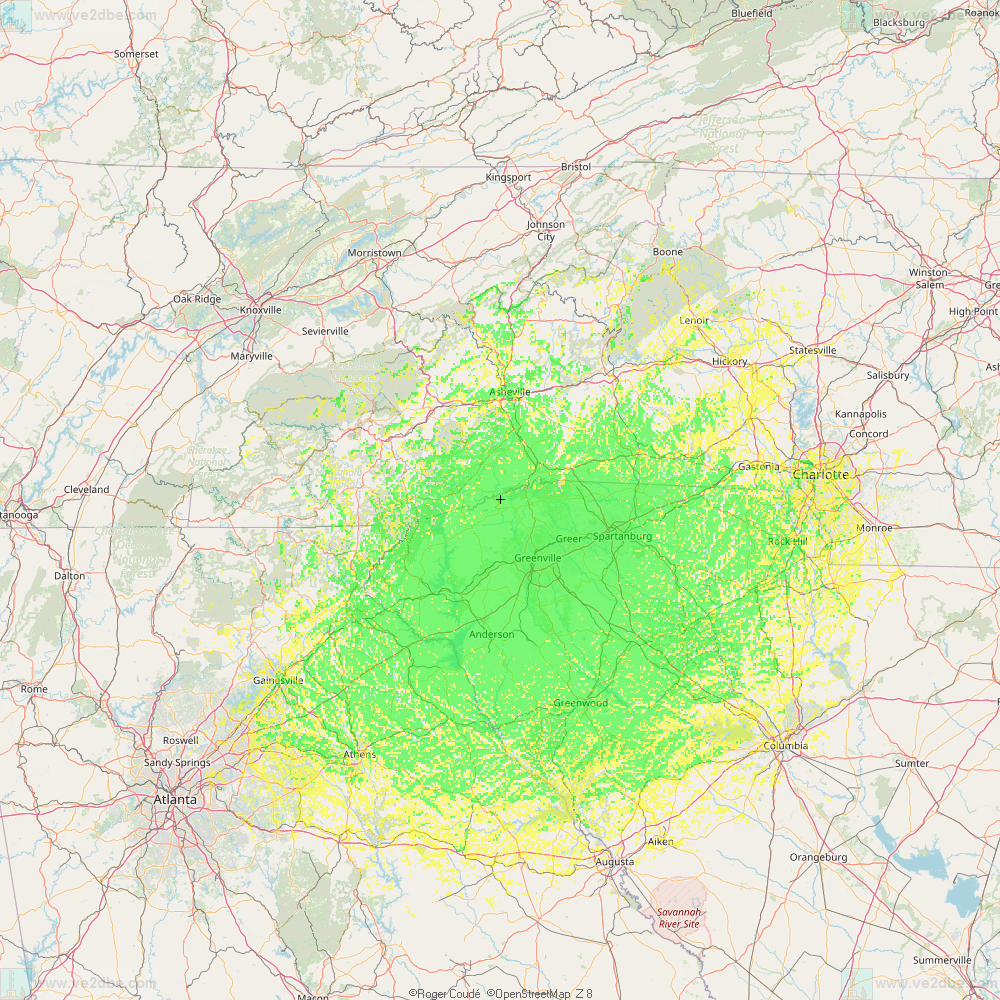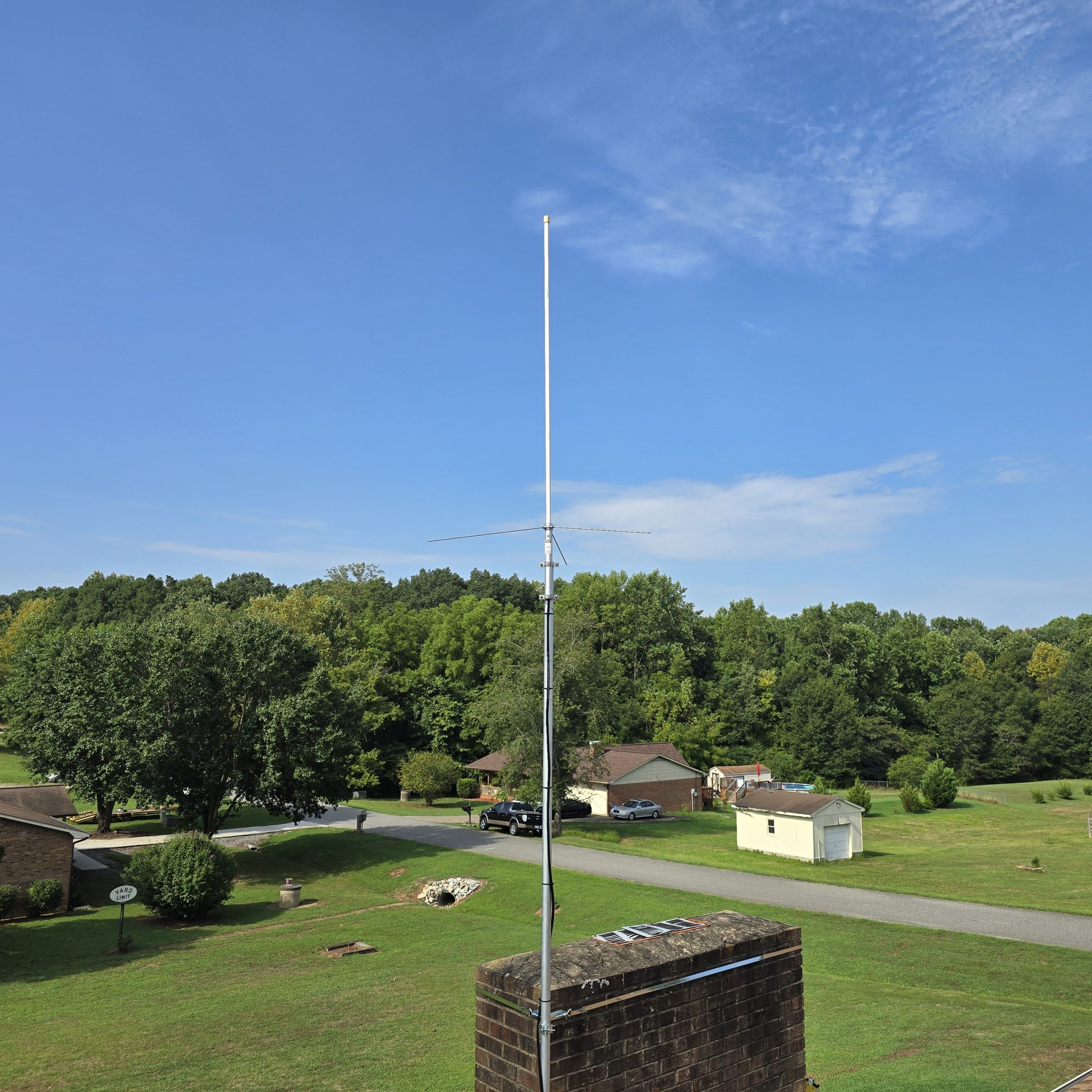
Originally started as the Carolina Rail Feed Association, the Southeast Rail Feed Association is a group of volunteers throughout the southeast who plan, install, and maintain railroad radio feed sites. We have feeds installed in a multitude of locations throughout the region including, but not limited to, major cities such as Asheville, Greensboro, Cary, Charlotte, Salisbury, and more. Radio feeds are an incredible resource for railfans, giving them the ability to listen in to operations and keep track of train locations using radio traffic. They are not used for monetary gain and generate no revenue, so all feeds are funded through donations by those in the community and members of the association.
Founded in early 2024, the SERFA now has meetings on the second Wednesday of every month to give updates on current projects, discuss problems and questions by maintainers and hosts, and have general discussions about the rail radio hobby in general. All meetings are held virtually, and everyone is welcome. If you are interested in joining, please submit a membership request to the Facebook Group.
In Progress Projects
Below is a list of current feed projects and their details listed in order of their progress towards installation. Fundraising amounts will be updated daily adjusting for donations received. Click each feed name to expand all details.
Anderson Mountain, NC
Anderson Mountain is a hill in southeast Catawba County about 500′ above the average elevation in the area (true elevation at peak of 1546′). It is a highly sought after radio service location due to its reliable coverage of the northwest Charlotte metro area, as well as a large chunk of the city itself. Negotiations are in the works for a tap on the existing antenna installation of a commercial communications provider. This will greatly reduce the cost of installation as an antenna, coax, filter, and professional tower climber will not be necessary. The only requirements will be the two radios, a power supply, and a computer. Internet will be provided by the communications provider using their wireless point-to-point data network. As things stand, rent will also not be a factor as a trade is in the works for tower space at the Southeastern Narrow Gauge & Shortline Museum (the current Newton Feed host) for a redundant down link to be used by the provider.
The site will host two separate feeds: Central Piedmont North Carolina Rail and Eastern Blue Ridge North Carolina Rail. The Central Piedmont feed will scan Norfolk Southern’s Charlotte and Columbia Districts, offering coverage of the mainline between Maybelle (Lexington, NC) and Grover, NC and the R-Line from Charlotte Junction to Rock Hill, SC. The Eastern Blue Ridge feed will scan Norfolk Southern’s Asheville District, offering coverage of the AS-Line from Salisbury, NC to Connelly Springs, NC; the Catawba Lead from Catawba, NC to Terrell, NC; the O-Line from Charlotte, NC to Mooresville, NC; and the LE-Line from Mooresville, NC to Clemmons, NC. Additionally, it will cover the entirety of CSX’s Charlotte Subdivision from Monroe, NC to Bostic, NC.
These feeds, alongside the existing Lynn Gap feeds, will act as “broad range” feeds that work hand in hand with the smaller feeds in the region. Individuals can listen in to the large feeds for broad coverage, but switch to the more local feeds for a tighter focus area. This practice is already in use with the Lynn Gap feeds and the Marion, Bostic, Spartanburg, and Newton feeds.


As of November 2024, the Anderson Mountain feed has been fully funded and is now awaiting installation.
Altavista, VA
A host has been located just north of Altavista, VA. Based on initial surveys, the antenna will likely be mounted at a height of 30′ with impressive coverage of both the NS Mainline and Altavista District. The feed will scan NS channels for their mainline, likely covering from Lynchburg, VA to Chatham, VA, and their Altavista District, likely covering from Moneta, VA to Brookneal, VA. This feed will offer highly desired coverage of a major point on the NS system in the state of Virginia. It will fill a major gap that currently exists between Lynchburg and Greensboro as well as east of Roanoke. Planned equipment for the feed includes a Tram 1487, LMR-400 coax, and a Kenwood TK-7180.


As of right now, this feed is still in need of funding for equipment including an antenna, mounting hardware, coax, a radio, a power supply, a computer, and interfacing cabling. If interested, donations can be made on the Support Page of the site or by clicking the button below:
Completed Projects
Below is a list of some, but not all, completed installations by the SERFA team. Click each feed name to expand all details.
Flagship/Regional Feeds
Lynn Gap, NC
Installation of the Lynn Gap radio feeds was completed by volunteers on April 13, 2024. The feed features a Comet CA-F22GFN antenna mounted at a height of 20′ tied to a pair Kenwood TK-7180 radios with a 25′ of LMR-400 coax. Of the two feeds, one scans NS frequencies for traffic along its AS-Line, Mainline, R-Line, and W-Line while the other scans CSX frequencies for traffic along its Blue Ridge, Charlotte, and Spartanburg Subdivisions.
These feeds are the first high elevation broad range feeds in North and South Carolina. With a range of over 100 miles on the CSX Blue Ridge Subdivision (Clinchfield), there are no other feeds in the states that come close. While they may be the first, they are far from the last as multiple similar broad range feeds are currently in the works.





Caesars Head Mountain, SC
Installation of the Caesars Head Mountain NS feed was completed by volunteers on August 23, 2025. The feed features a 4-bay folded dipole antenna array mounted at a height of 130′ tied to a Kenwood TK-7180 radio with a run of double helix coax. The feed currently only features an NS radio, but after some upcoming antenna changes, a CSX radio is planned to be added as well.
This feed is the first high elevation broad range feed in South Carolina, offering wide range coverage for an area that previously only featured small range feeds peppered in certain locations. It offers impressive coverage from Seneca, SC to Bessemer City, NC on the NS mainline and Inman, SC to Carlisle, SC on the NS W-Line. The future CSX radio will feature channels from the Blue Ridge, Belton, Spartanburg, CN&L, Monroe, Abbeville, and McCormick Subdivisions.





Local Feeds
Columbia, SC
Installation of the Columbia radio feed was completed by volunteers on September 21, 2024. The feed features a Tram 1487-B antenna mounted at a height of 40′ tied to a Kenwood TK-7180 with a 20′ of LMR-400 coax. The feed scans all CSX and NS frequencies for their lines in the Columbia area. No yard channels are scanned at this time, only the road and dispatch channels for each line.
A big thank you goes out to James Guffey, Clint Renegar, Joe Hinson, Tracey Green, BJ Preddy, Spencer Landis, Tanner Abernathy, and various other generous donors for their contributions towards the funding of the Columbia feed. Without their help, it never would have become a reality.




Thomasville, NC
Installation of the Thomasville radio feed was completed by volunteers on July 10, 2024. The feed features a Tram 1487-B antenna mounted at a height of 20′ tied to a Kenwood TK-790 with a 75′ run of LMR-400 coax. The feed scans NS frequencies for its mainline through Thomasville.
This feed was actually a relocation of the High Point feed rather than a new installation. The move allowed for improved range, pairing with the Thomasville Railcam on Virtual Railfan, and advertising for the Thomasville Tourism Department.




Concord, NC
Installation of the Concord radio feed was completed by volunteers on July 12, 2023, but a major upgrade was also completed on October 26, 2024. The feed features a Tram 1487-B antenna mounted at a height of 40′ tied to a Kenwood TK-7180 with a 50′ run of LMR-400 coax. The feed scans NS frequencies for its mainline through Concord as well as the nearby O-Line through Huntersville.
Since its initial installation in 2023, the Concord feed had continuously dealt with intermittent noise on received transmissions. The belief for the longest time was that a transformer outside the host location was the cause of the noise. However, after further investigation, the noise was discovered to be caused by the LED lighting in the building. After careful consideration of a few different solutions, the decision was made to relocate the radio outside at the base of the tower. This solution not only dealt with the noise, but allowed the coax length to be reduced by more than half.
This installation is the first of its kind by the SERFA, and with the Concord feed acting as a proof of concept, it has opened the door for installations at many future locations that wouldn’t have been considered feasible before.





Greenwood, SC
Installation of the Greenwood radio feed was completed by volunteers on March 15, 2025. The feed features a Tram 1487-B antenna mounted at a height of 30′ tied to a Kenwood TK-7180 with a 50′ run of LMR-400 coax. The feed scans CSX frequencies for its terminal and lines through Greenwood.
Due to its location, a feed in Greenwood was a highly requested location by our listeners. Greenwood is not only a yard, but a major crew change point and intersection of 4 different lines. These lines include the Monroe subdivision (later Abbeville Subdivision) to Atlanta, the Monroe Subdivision to Hamlet, the Spartanburg Subdivision to Spartanburg, and the McCormick Subdivision to Augusta. This allows for fairly consistent traffic ranging from signal calls, detectors, yard switching, and job briefings from crew changes. The host site for the Greenwood feed is also directly adjacent to the yard, allowing for clear signal from conductors on the ground during switching.




Kings Mountain, NC
Installation of the Kings Mountain Feed was completed on August 1, 2025. The feed features a Tram 1487 antenna mounted at a height of 20′ tied to a Kenwood TK-7180 with a 50′ run of LMR-400 coax. The feed scans NS frequencies for its mainline through Kings Mountain as well as CSX frequencies for its Charlotte Subdivision in the Shelby area.
The feed scans NS channels for their mainline, covering from Bessemer City, NC to Blacksburg, SC, and CSX channels for their Charlotte Sub, covering from Cherryville, NC to Lattimore, NC. This feed will act nicely as a local feed filling the gap between the Gastonia and Caesars Head Mountain feeds on the NS Mainline, and connecting with the eastern edge of the Bostic feed on the CSX Charlotte Sub.




